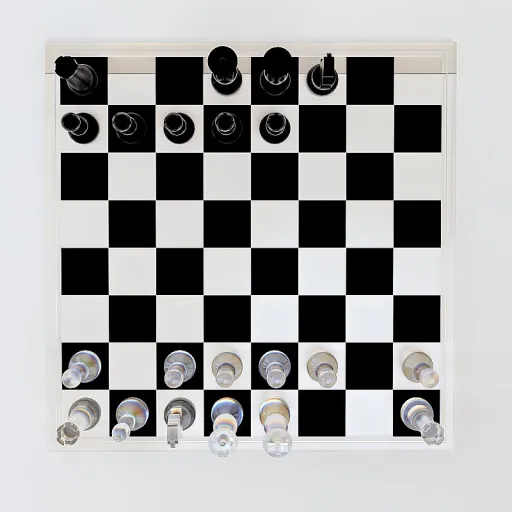
Understanding the purpose of a 5 paragraph essay graphic organizer
Why Use a 5 Paragraph Essay Graphic Organizer?
For many students and lifelong learners, organizing thoughts before writing an essay can be a real challenge. The 5 paragraph essay graphic organizer is a practical tool designed to help structure ideas clearly and logically. Whether you are working on opinion writing, informational writing, or persuasive writing, this template provides a visual map to guide your thinking and writing process.
Using a graphic organizer is not just about filling in boxes. It’s about understanding how each paragraph supports your main idea and how your essay outline can be built step by step. This approach is especially helpful in language arts classes, where students are expected to write essays that follow a clear structure. The organizer acts as an anchor chart, making it easier to plan and draft essays for any grade writing level.
Teachers often use these organizers as part of their lesson plan or as a free resource during writing activities. They help break down the essay writing process into manageable parts, making it less overwhelming for students. For continuous learners, the organizer can be adapted for different types of essays, including expository essays and opinion essays, and can be used as a template for both classroom and self-directed learning.
In addition to supporting paragraph writing, the 5 paragraph essay graphic organizer encourages critical thinking and helps learners see the connections between their ideas. It’s a valuable tool for anyone looking to improve their writing graphic skills, whether for academic, professional, or personal growth. For more insights on how effective tools can support continuous learning, check out this article on how effective signage supports continuous learning.
Breaking down the components of the organizer
Visualizing the Structure of an Essay
A writing graphic organizer for a five-paragraph essay is more than just a template. It is a visual map that helps students and continuous learners see how their ideas fit together. The organizer breaks down the essay into manageable sections, making it easier to plan and write each paragraph. Whether you are working on opinion writing, informational writing, or persuasive writing, the organizer provides a clear outline for your thoughts.
Key Elements of the Organizer
- Introduction: The first section is dedicated to the opening paragraph. Here, you state your main idea or thesis. This part sets the tone for the entire essay and helps guide the reader.
- Body Paragraphs: The next three sections are for the body paragraphs. Each paragraph focuses on a single point that supports your thesis. The organizer prompts you to include evidence, examples, or explanations in each section. This step-by-step approach is especially helpful for grade writing and language arts activities.
- Conclusion: The final section is for the closing paragraph. This is where you summarize your main points and restate your opinion or findings. The organizer ensures that your essay ends with a strong, clear message.
Types of Graphic Organizers
There are many free graphic organizers available online, each with a unique layout. Some use boxes or bubbles to separate ideas, while others use lines or charts. For example, an anchor chart might be used in a lesson plan to show how an expository essay is organized. These templates can be adapted for different essay types, including informational, persuasive, and opinion essays.
Supporting Different Learning Styles
Graphic organizers are not just for students in a classroom. They are useful tools for anyone looking to improve their essay writing skills. Organizers help break down complex tasks into simple steps, making it easier to focus on each part of the essay. For those interested in a paperless approach, digital organizers can be just as effective as printed ones. You can learn more about this in the article on embracing a paperless approach in continuous learning.
Practical Uses in the Classroom and Beyond
Teachers often use graphic organizers as part of their lesson plans or as anchor charts in the classroom. These tools help students visualize the structure of their essays and keep their writing focused. For continuous learners, organizers can be used to outline essays, plan activities, or map out ideas for informational writing. No matter your grade or experience level, using a paragraph graphic organizer can make essay writing more manageable and effective.
Benefits for continuous learners
Why Graphic Organizers Matter for Lifelong Learners
Continuous learners often juggle multiple subjects, formats, and goals. Using a writing graphic organizer, especially the classic 5 paragraph essay template, can make a real difference in how information is absorbed and retained. Here’s how these tools support ongoing growth in language arts, essay writing, and beyond:
- Clarity and Structure: Organizers help break down complex ideas into manageable sections. Whether you’re outlining an expository essay or mapping out a persuasive writing task, the visual format keeps your thoughts organized and your writing focused.
- Consistency Across Activities: For students and adults alike, using a familiar essay outline or paragraph graphic organizer streamlines the process. This consistency is especially valuable when switching between informational writing, opinion essays, or even lesson plan development.
- Improved Retention: Writing out each step in the organizer, from the introduction to the conclusion, reinforces understanding. This hands-on approach is proven to boost memory and comprehension, making it easier to recall key points during assessments or real-world applications.
- Adaptability: Free templates and anchor charts can be tailored for different grade writing levels, from elementary to advanced English language learners. This flexibility ensures that organizers remain useful as your skills evolve.
- Enhanced Critical Thinking: By visually mapping arguments, evidence, and opinions, learners develop stronger analytical skills. This is crucial not only for essay writing but also for activities like creating a lesson or evaluating leadership qualities. For more on how to describe a leader effectively, check out this guide to describing a leader.
In summary, integrating graphic organizers into your routine isn’t just about better essays. It’s about building a foundation for lifelong learning, adaptable across subjects and professional contexts.
Practical steps to integrate the organizer into your study routine
Making the Organizer Part of Your Study Habits
Integrating a writing graphic organizer into your study routine can make essay writing and paragraph development much more manageable. Whether you are working on an expository essay, opinion writing, or informational writing, having a clear essay outline helps you stay organized and focused. Here are some practical steps to help you use a 5 paragraph essay graphic organizer effectively:
- Choose the right template: Select a free graphic organizer or printable template that matches your assignment, whether it’s for a persuasive writing task or an informational essay. Many organizers are available online for different grade levels and writing activities.
- Start with your main idea: Use the organizer’s central box or section to write your thesis or main opinion. This step sets the direction for your entire essay and keeps your writing on track.
- Break down your ideas: Fill in each paragraph section of the organizer with supporting points, evidence, or examples. For opinion essays, state your reasons clearly. For informational writing, organize facts logically. This helps you see the flow of your essay before you start drafting.
- Refer to your organizer as you write: As you move from outline to full essay, use your completed organizer as an anchor chart. This keeps your paragraphs focused and ensures you don’t miss any key points.
- Review and revise: After writing, revisit your organizer to check if each paragraph aligns with your original plan. Adjust your essay or the organizer as needed for clarity and coherence.
By making the essay graphic organizer a regular part of your lesson plan or study session, you’ll find it easier to tackle different types of essays and writing assignments. This approach works well for students in language arts classes, as well as for anyone looking to improve their English language writing skills. Over time, using organizers for paragraph writing and essay planning becomes second nature, supporting continuous learning and better grade writing outcomes.
Common challenges and how to overcome them
Overcoming Obstacles When Using Graphic Organizers
Even with a well-designed essay graphic organizer or template, continuous learners can face some common challenges. Recognizing these obstacles and applying practical solutions can make your writing activities more effective and less stressful.
- Feeling Overwhelmed by Structure: Some students find the five-paragraph essay outline rigid, especially when transitioning from creative or opinion writing. To ease this, start with a free graphic organizer or a simple anchor chart. Gradually introduce more detailed organizers as your confidence grows.
- Difficulty Filling Out Each Section: If you struggle to complete every part of the organizer, try brainstorming ideas for each paragraph first. Use a paragraph graphic or map to jot down quick notes. This step helps you visualize your essay before you start formal writing.
- Lack of Engagement: When organizers feel repetitive, vary your activities. Switch between informational writing, persuasive writing, and expository essay formats. Incorporate lesson plan elements or language arts games to keep the process fresh.
- Transferring Ideas to Full Essays: Moving from an organizer to a full essay can be challenging. Practice by writing short paragraphs based on your outline. Over time, this will help you connect your ideas smoothly and improve your grade writing skills.
- Adapting for Different Grade Levels: Not all templates fit every student. Adjust the complexity of your organizer writing or essay outline to match your grade or learning goal. For younger students, use more visuals or step-by-step guides. Older learners can benefit from more detailed organizers and informational essay templates.
Remember, graphic organizers are tools to support your essay writing, not strict rules. If you find a particular organizer isn’t working, try a different format or create your own. The key is to make the organizer paragraph process work for your unique learning style and goals in English language or language arts lessons.
Adapting the organizer for different learning goals
Customizing the Organizer for Your Learning Objectives
Continuous learners often have diverse goals, ranging from mastering opinion writing to developing skills in informational or persuasive writing. The flexibility of a 5 paragraph essay graphic organizer makes it a valuable tool for adapting to these different needs. Here’s how you can tailor the organizer template to fit various learning contexts and writing activities:
- Opinion Writing: When focusing on opinion essays, adjust the organizer to emphasize clear thesis statements and supporting reasons. Use the template to map out your main opinion in the introduction, then dedicate each body paragraph to a separate reason, supported by evidence or examples. This approach helps students structure their arguments logically.
- Informational Writing: For informational essays, the organizer can be modified to outline key facts or concepts in each paragraph. The introduction sets the topic, while each body paragraph covers a different aspect or detail, making it easier to organize research and present information clearly.
- Persuasive Writing: In persuasive writing, the graphic organizer becomes a step-by-step guide for building a compelling argument. Each section of the organizer can be used to plan out persuasive techniques, such as addressing counterarguments or using emotional appeals, which are essential for effective persuasive essays.
- Grade-Level Adjustments: For younger students or those new to essay writing, simplify the organizer by reducing the number of required details or using more visual elements, like a paragraph graphic or anchor chart. For advanced learners, expand the template to include more complex outlines or additional supporting paragraphs.
Many free graphic organizers are available online, offering templates for different essay types and grade levels. Whether you are working on an expository essay, developing a lesson plan for language arts, or guiding students through organizer writing activities, adapting the organizer ensures it meets your specific learning goals.
| Essay Type | Organizer Focus | Suggested Adaptations |
|---|---|---|
| Opinion | Thesis, reasons, evidence | Highlight opinion and supporting reasons in each paragraph |
| Informational | Facts, concepts, details | Assign each paragraph to a key fact or concept |
| Persuasive | Arguments, counterarguments, appeals | Include space for counterarguments and persuasive techniques |
| Expository | Explanation, analysis | Use the organizer to break down complex ideas step by step |
By adjusting your essay graphic organizer to match your writing goals, you can make each lesson or activity more effective. This adaptability supports continuous improvement in paragraph writing, essay outline creation, and overall English language skills.












